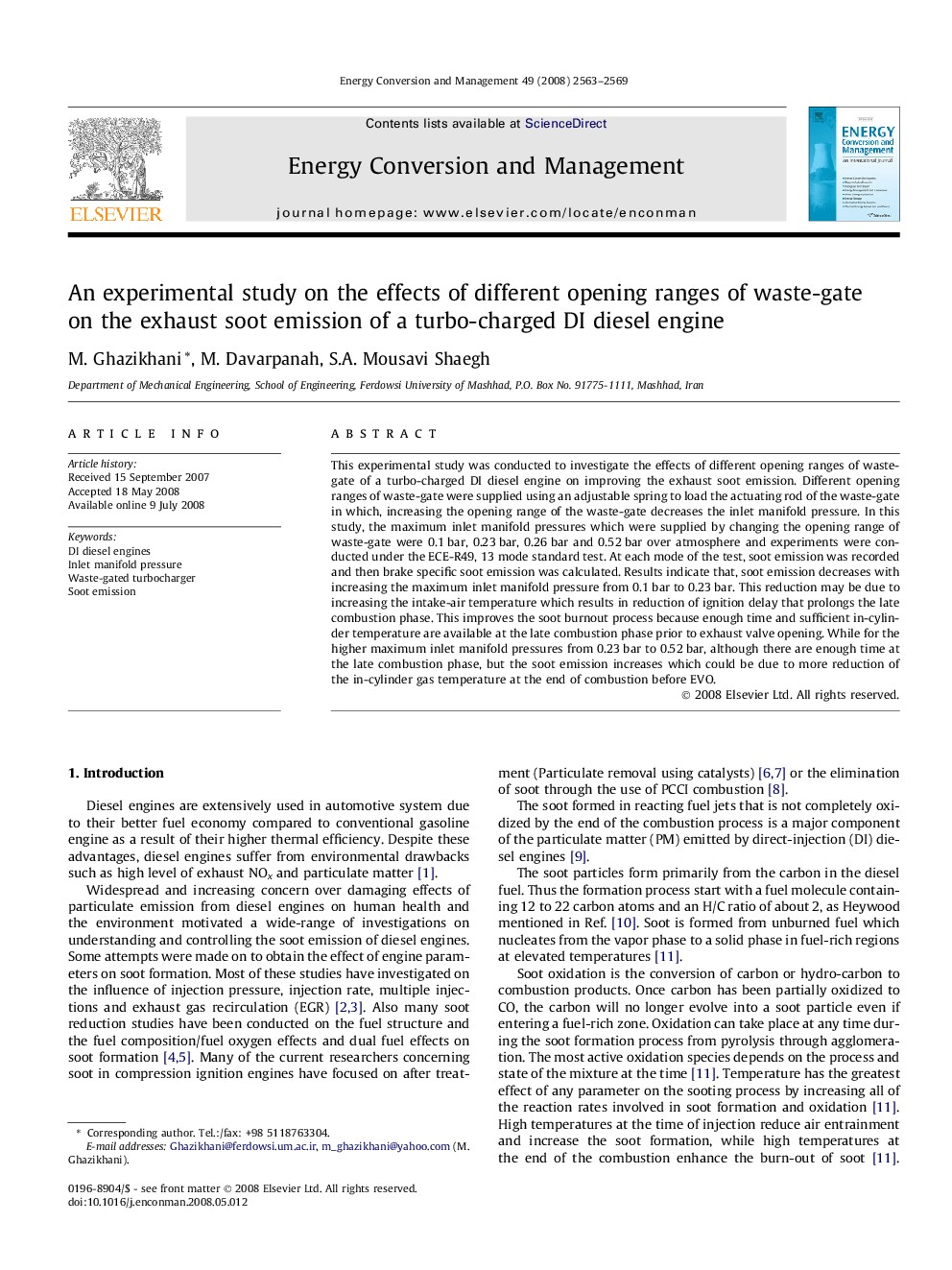| Article ID | Journal | Published Year | Pages | File Type |
|---|---|---|---|---|
| 761986 | Energy Conversion and Management | 2008 | 7 Pages |
This experimental study was conducted to investigate the effects of different opening ranges of waste-gate of a turbo-charged DI diesel engine on improving the exhaust soot emission. Different opening ranges of waste-gate were supplied using an adjustable spring to load the actuating rod of the waste-gate in which, increasing the opening range of the waste-gate decreases the inlet manifold pressure. In this study, the maximum inlet manifold pressures which were supplied by changing the opening range of waste-gate were 0.1 bar, 0.23 bar, 0.26 bar and 0.52 bar over atmosphere and experiments were conducted under the ECE-R49, 13 mode standard test. At each mode of the test, soot emission was recorded and then brake specific soot emission was calculated. Results indicate that, soot emission decreases with increasing the maximum inlet manifold pressure from 0.1 bar to 0.23 bar. This reduction may be due to increasing the intake-air temperature which results in reduction of ignition delay that prolongs the late combustion phase. This improves the soot burnout process because enough time and sufficient in-cylinder temperature are available at the late combustion phase prior to exhaust valve opening. While for the higher maximum inlet manifold pressures from 0.23 bar to 0.52 bar, although there are enough time at the late combustion phase, but the soot emission increases which could be due to more reduction of the in-cylinder gas temperature at the end of combustion before EVO.
